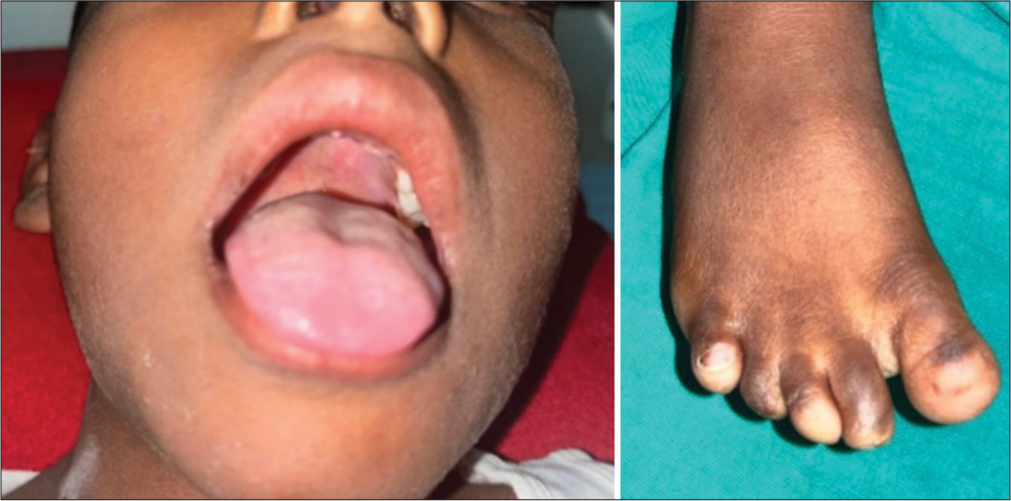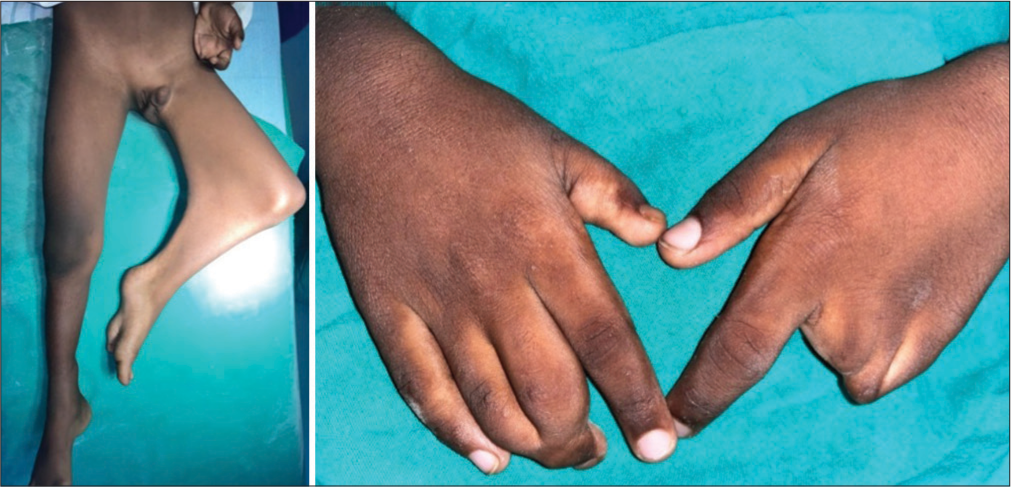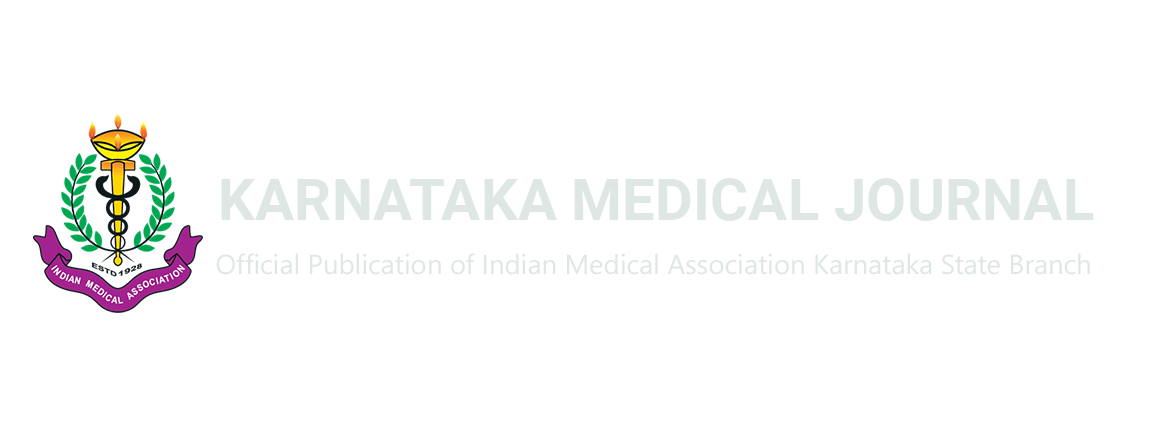Translate this page into:
Popliteal pterygium syndrome: A case report on abnormal insertion of hamstrings
*Corresponding author: Lohith Y N, Department of General Surgery, Karnataka Institute of Medical Sciences, Hubballi, Karnataka, India. ynlohith@gmail.com
-
Received: ,
Accepted: ,
How to cite this article: Lohith YN, Shirol SS, Jeedi A. Popliteal pterygium syndrome: A case report on abnormal insertion of hamstrings. Karnataka Med J 2023;46:17-9. doi: 10.25259/KMJ_1_2023
Abstract
The popliteal pterygium syndrome is a congenital malformation that includes orofacial, musculoskeletal and genitourinary anomalies. We report one case of the same who underwent surgical correction for abnormal insertion of hamstrings.
Keywords
Popliteal pterygium syndrome
Abnormal insertion
Hamstrings
INTRODUCTION
Popliteal pterygium syndrome (PPS) is a rare autosomal dominant disorder. It may present with diverse clinical manifestations. The clinical features of the syndrome are highly variable and show different combinations of anomalies such as cleft palate, cleft lip, popliteal webbing, syndactyly, genitourinary anomalies, nail anomalies, syngnathia, ankyloblepharon, talipes and digital reduction defects. However, the most characteristic feature is the pterygial band.[1,2] Which commonly consists of fibrous bands, but, here, we are presenting a case where the pterygial band was made by the hamstring muscles with abnormal insertion. There is no English literature about abnormal insertion of hamstrings. Here, we report one of its rare case.
CASE REPORT
A 6-year-old boy, diagnosed with PPS, has achieved all developmental milestones normally. He has learned to walk and run but he cannot put his heels fully plantigrade. On clinical examination, he had 40–50° fixed flexion of the left knee, with a pterygial band extending from the left buttock to the calcaneus. Ankle movements were normal. There is the absence of lateral two toes in the left foot with a deep cleft suggestive of ectrodactyly. There is absence of nails in the toes of the right foot [Figure 1]. Incomplete simple syndactyly of right 3rd and 4th digits, absence of medial three digits of the left hand and high arch palate with malformed scrotum were noted [Figure 2]. All routine investigations were within normal limits. Ultrasonography of the abdomen was also normal.

- High arch palate and absence of toe nails in the right foot.

- Popliteal pterygium with malformed scrotum, incomplete simple syndactyly of right 3rd and 4th digits, absence of medial three digits of the left hand in the sequence.
Intraoperatively
The patient underwent tenotomy with Z-plasty with V-Y-plasty with reinsertion of the left hamstring under general anaesthesia. Operative findings were as follows:
The contracture band was formed by a group of hamstring muscles with abnormal insertion at tendoachilles region into soft tissue [Figure 3]
Multiple fibrous band attachments were seen between tendons and thigh muscles [Figure 4]
Fascial layer was thick and tout around the contracture band.

- Intraoperative findings showing abnormal insertion of hamstring muscles.

- Intraoperative findings showing multiple fibrous band attachments seen between tendons and thigh muscles.
RESULTS
Hamstring muscle insertion at tendoachilles detached and reinserted at the lower end of the thigh. Neurovascular bundles were deep in the popliteal fossa and were normal with no stretch or tension on releasing contracture. Knee joint was stiff, and complete extension of the knee was not achieved even after the complete release of the contracture band. V-Y-plasty was done to cover the defect at popliteal fossa, the remaining raw area was covered with split-thickness skin graft harvested from the left thigh.
After 3 months of follow-up, the fixed flexion contracture of the left knee has reduced by 15° after the procedure and the child is able to walk, but complete correction could not be achieved.
CONCLUSION
PPS is a rare genetic disorder that can present with diverse clinical manifestations. Despite its variable presentation, early diagnosis and treatment can improve outcomes and quality of life of affected patients. Abnormal insertion of hamstrings in PPS is rare, and furthermore, research is necessary to improve our understanding of the pathogenesis and clinical course of PPS and develop more effective treatments for this complex disorder.
Ethical approval
The Institutional Review Board approval is not required.
Declaration of patient consent
Patient’s consent not required as patients identity is not disclosed or compromised.
Conflicts of interest
There are no conflicts of interest.
Use of artificial intelligence (AI)-assisted technology for manuscript preparation
The authors confirm that there was no use of artificial intelligence (AI)-assisted technology for assisting in the writing or editing of the manuscript and no images were manipulated using AI.
Financial support and sponsorship
Nil.
References
- Popliteal pterygium syndrome: An orthopaedic perspective. J Pediatr Orthop. 1990;10:58-64.
- [Google Scholar]






